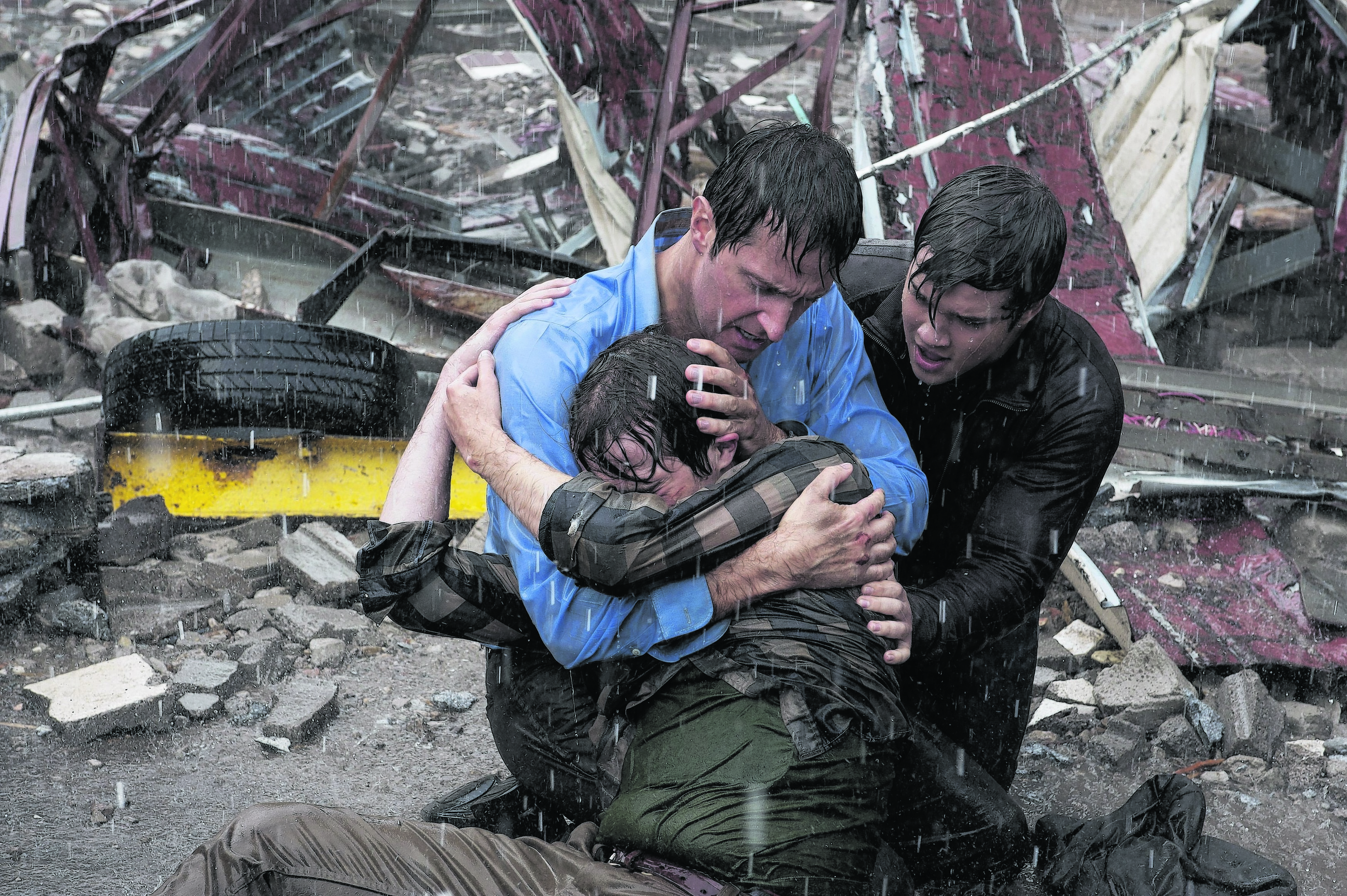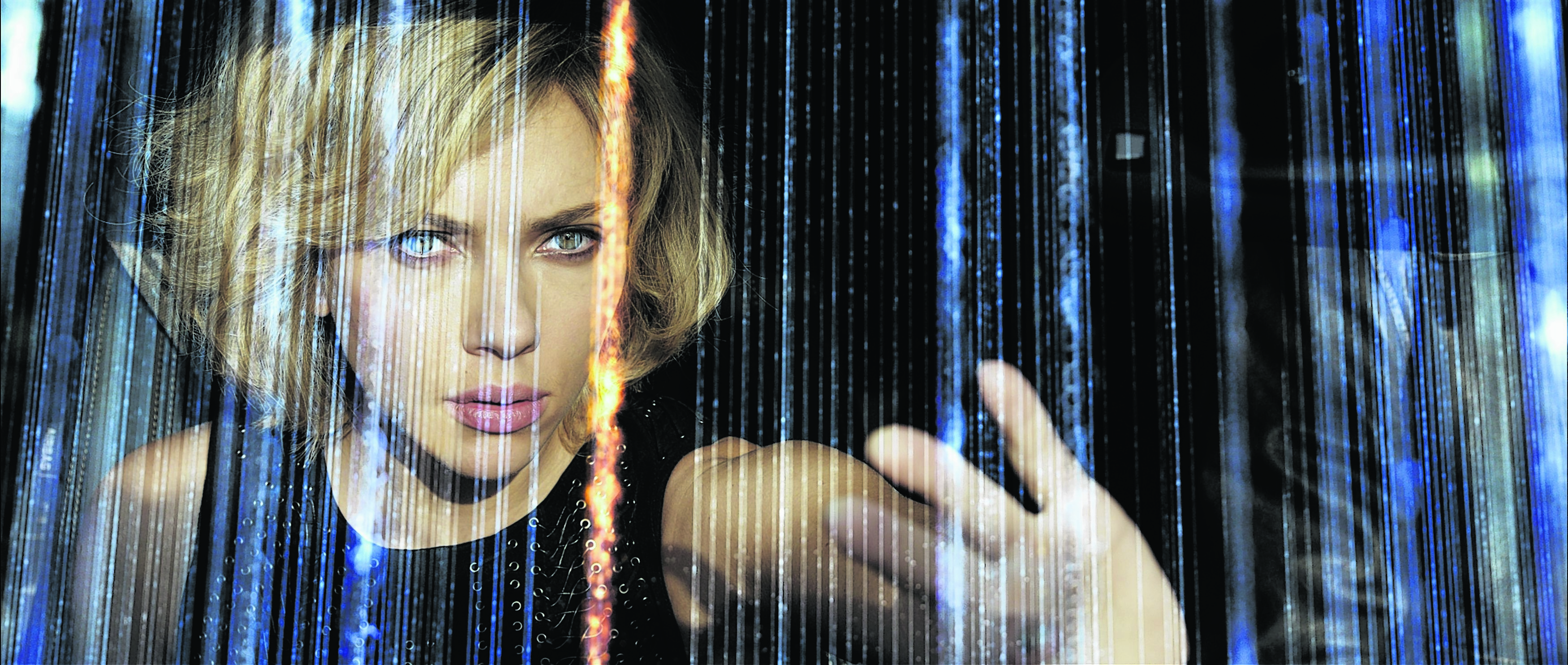INTO THE STORM (12A)
Eighteen years ago, Dutch director Jan de Bont capitalised on the success of Speed to harness the full fury of Mother Nature in Twister.
The special-effects-laden action thriller followed rival teams of daredevil storm chasers as they converged on Oklahoma during a spate of devastating tornadoes.
Back in the real world, the intervening years have been witness to increasingly extreme weather systems across the globe – tsunamis, hurricanes, floods – that have devastated communities and highlighted our helplessness against the elements.
It’s an ideal time for director Steve Quale to send us back into the eye of the cinematic storm in this adrenalin-fuelled disaster movie.
Quale and his army of digital-effects wizards unleash a wave of cyclones on an unsuspecting Midwest town and witness the carnage through the lenses of crazed storm-chasers and terrified residents, who cannot outrun the swirling winds.
As a visual spectacle, Into the Storm boasts all of the sound and fury you crave and expect, including one vortex bearing down on an airport and throwing around passenger jets as if they were toys.
However, in the calm before this digitally rendered hell, screenwriter John Swetnam doesn’t spend enough time fleshing out his multitude of characters to ensure we care deeply that they survive the onslaught.
Storm-chaser and documentary filmmaker Pete Moore (Matt Walsh) is poised to lose his funding, unless he can drive his armour-plated vehicle Titus inside a tornado.
Meteorologist Allison Stone (Sarah Wayne Callies) predicts a weather system will sweep through the town of Silverton and she joins Pete on the road with three camera operators – Lucas (Lee Whittaker), Daryl (Arlen Escarpeta) and new boy Jacob (Jeremy Sumpter).
On the outskirts of town, the storm chasers encounter adrenalin junkies Donk (Kyle Davis) and Reevis (Jon Reep), who give chase, determined to place themselves in harm’s way to guarantee more hits on their YouTube channel.
Meanwhile, Silverton High School vice-principal Gary Morris (Richard Armitage) prepares for graduation of the senior class.
Before the ceremony, he clashes with his two sons, 17-year-old Donnie (Max Deacon) and younger brother Trey (Nathan Kress), who are grieving the loss of their mother.
As the graduation begins, tornado sirens sound.
Into the Storm plays to its strengths, capturing the decimation of large swaths of Silverton from multiple angles in the air and on the ground.
The first-person conceit doesn’t always work – shaky handheld footage reduces some action sequences to a blur – but it does afford Quale one excellent opportunity to pluck our heartstrings when Donnie and classmate Kaitlyn (Alycia Debnam-Carey) record tearful farewells to their parents.
Armitage, Callies and co are largely forgettable.
Logic is smashed to smithereens well before Allison traces the predicted path of the storm and gasps dramatically: “It’s heading straight for the school.”
LUCY (15)
Derriere-numbingly long films may be all the rage, but, at a lean 89 minutes, Lucy, the new action thriller from Luc Besson, is all the better for bucking this Hollywood trend.
And with a kidnapping, killing sprees and questionable drugs thrown into the fray, there’s certainly enough in that hour and a half to stop you from slipping out of the cinema.
Lucy (Scarlett Johansson) is a carefree student living in Taiwan, who is tricked by her new boyfriend, Richard, into doing his dirty work and carrying a briefcase, jam-packed with potent new drugs, into a hotel for him.
But there’s no time for pleasantries here and before the concierge has greeted Lucy, Richard has been dispatched and Lucy is held hostage by the neighbourhood’s merciless mob of local drug lords, headed up by the unsparing Mr Jang (Choi Min-sik).
Waking up, Lucy discovers that the mob has taken the liberty of surgically implanting thousand of pounds worth of a deadly blue drug, CPH4, which increases the user’s brain capacity, into her stomach.
And more than that, if the bright blue crystals leak, it will kill her.
But leak they do, and Lucy, who is sent across the world as a drug mule, soon finds her brain working on disturbing new levels, signposted in the film with frequent updates on the percentage of brain capacity she’s using.
As well as being hell-bent on exacting revenge on the mobsters, Lucy also busies herself by tracking down the eminent professor Samuel Norman (Morgan Freeman), in Paris, who has spent decades researching the brain’s potential.
In a deft twist to Johansson’s role as a human-like operating system in Spike Jonze’s Her, Lucy sees the actress’s voice take on a lifeless tone, shedding personality and lightness as her brain’s potential expands.
Much has been made of the film’s neurological theory not stacking up, but scientific soundness isn’t the mission here – entertainment is.
And while there are some rather odd moments – the flashes to a prehistoric Lucy, the strained conversation Lucy has with her mum and the missed opportunity to kill Mr Jang while she can – Lucy is nevertheless a punchy film, which demands your attention every minute of the way.

